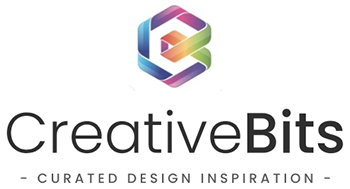Even if you aren’t actively trying to find a job, your resume is an essential piece of your digital portfolio. From websites such as LinkedIn, to individual portfolio pages such as Behance that showcase your work, you want to portray the message that you are putting the right ambiance out there about who you are, the work you do and why you are a rock star designer.
A resume needs to highlight some of the abilities that aren’t as evident from looking at a few marquee pieces. You resolve problems every day, and that’s the essence of great design. It creates a visual solution that communicates something to others. Your resume needs to show that you can do more than simply make something perfect, it requires to show that you can develop solutions.
How can you do this? Provide examples or case research studies that provide issues you have actually solved in the cover letter that you connect to a resume or in the portfolio section of the file.
A few of your marketing skills will inevitably appear in the resume itself. You require to have some marketing understanding and background so that you can both offer style tasks. Make it your job to comprehend concepts in SEO, marketing, and how business is targeting and reaching consumers. Many customers and companies will tell you they require a design group that’s versatile and can finish a variety of jobs. One of those includes printed design. While much of the style conversation tends to center around digital concepts, it is just as crucial to know how to create something and get it printed, from posters to packaging labels, to signboards, it matters.
Just as essential as comprehending how to create printed items, is working with suppliers or other 3rd parties to produce these components. If you are somebody who has always focused on print, you need to get versed in digital design today. And if you are currently fluent in site style, ensure to add those details, consisting of program languages, content management system platforms, and relevant tools that you can utilize with ease.
When it concerns a resume, it is essential to note all appropriate skills, because lots of task sites utilize these keywords to “check out” and sort resumes based upon perspective fits. You don’t desire to miss an opportunity since you forgot to list the abilities you consider to be a force of habit. Be sincere and upfront about your level of HTML and code understanding. Even design prospects with fundamental HTML skills can beat out candidates without these skills. Can you read HTML? Compose a little? Are you versed enough to change stylesheets in an existing website style? Include these details. A lot of job posts will note what software abilities are very important, but any fluency in style tools ought to be standard on your resume.
Do not pack your resume with software applications that are so common. If you are fluent in Adobe InDesign, you can most likely leave off that you know how to utilize Microsoft Word.
Think about a few strong verbs that show your abilities in such a way that isn’t complete of cliches. If it’s not readable, what’s the point? Every designer needs to have a mutual understanding of typography. Once again, this is one of those skills that you may practically forget to mention.
At the end of the day, it all comes down to communication. How excellent of a designer you are parallels to how well you interact. While visual interaction is important, written and spoken interaction are likewise crucial. Are you a fantastic public speaker? Have you taught classes or held seminars? Include these aspects in your resume as evidence of performance. These skills are quite important on a daily basis. Team members who interact well are going to discover it much easier to work on jobs with a group and share and sell concepts. From tough abilities such as the technical capability to soft abilities like team effort and flexibility, your resume is somebody else’s first look into your expert self.
Don’t overdo it. Flowery or overly descriptive writing is not essential when it pertains to your resume. Compose in clear, concise, and error-free declarations. Arrange your resume into sections with different writing types. Save the storytelling for the cover letter and keep the real resume and recommendations simple. Ideally, your resume need to be no longer than one page.

